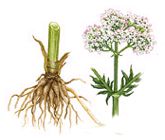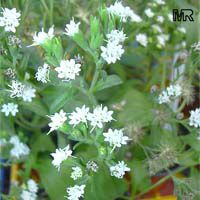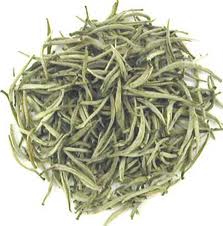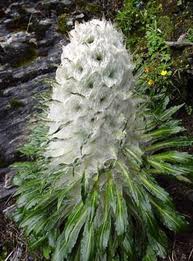 In herbal medicine, Chrysanthemum indicum has been one of the principal herbs in traditional Chinese medicine since the ancient times. Special tinctures and herbal mixtures with Chrysanthemum flowers were used for external purposes: in particular, as an effective skin treatment, as a remedy for fever reduction, and so on. In addition to very powerful anti-inflammatory properties, Chrysanthemum tea is considered to be an excellent herbal remedy due to its other therapeutic effects, namely antiviral, antimicrobial, antiasthma, and antihyperkinesia. Chemical content and elements of chrysanthemum have a potential to prevent cancer in a unique manner. It turned out that active elements of Chrysanthemum indicum can inhibit cancerous cells, and they are especially effective in combating liver cancer. All aerial parts of the plant (leaves, stems and petals) can be used for preparing teas, tinctures or extracts. Besides, Chrysanthemum tea and extracts are valued for their high content of flavornoids, giving us the opportunity to enjoy anti-aging and anti-cancer benefits of this herbal remedy.
In herbal medicine, Chrysanthemum indicum has been one of the principal herbs in traditional Chinese medicine since the ancient times. Special tinctures and herbal mixtures with Chrysanthemum flowers were used for external purposes: in particular, as an effective skin treatment, as a remedy for fever reduction, and so on. In addition to very powerful anti-inflammatory properties, Chrysanthemum tea is considered to be an excellent herbal remedy due to its other therapeutic effects, namely antiviral, antimicrobial, antiasthma, and antihyperkinesia. Chemical content and elements of chrysanthemum have a potential to prevent cancer in a unique manner. It turned out that active elements of Chrysanthemum indicum can inhibit cancerous cells, and they are especially effective in combating liver cancer. All aerial parts of the plant (leaves, stems and petals) can be used for preparing teas, tinctures or extracts. Besides, Chrysanthemum tea and extracts are valued for their high content of flavornoids, giving us the opportunity to enjoy anti-aging and anti-cancer benefits of this herbal remedy.
 Liquorice herb (Glycyrrhiza Glabra), the well known component of Liquorice sweets, is surprisingly one of the most important medicinal herbs on the planet. The reason given is that it tends to improve the action of all the other herbs and harmonise the action of the herbal formula. However the action of liquorice is presumed to be potentially effective (depends on the person, diet etc not the particular disease as they are all related), on all auto-immune diseases. Liquorice contains Glycosides called glycyrrhizin and glycyrrhizinic acid; these have a structure similar to the natural steroids in the body and tend to rapidly restore natural steroid production from the adrenal glands. So for general health benefits, improvement in energy, immune strengthening and a fair degree of immuno-modulatory effects along with all the aspects discussed in the article, then Naturleafhas its use.
Liquorice herb (Glycyrrhiza Glabra), the well known component of Liquorice sweets, is surprisingly one of the most important medicinal herbs on the planet. The reason given is that it tends to improve the action of all the other herbs and harmonise the action of the herbal formula. However the action of liquorice is presumed to be potentially effective (depends on the person, diet etc not the particular disease as they are all related), on all auto-immune diseases. Liquorice contains Glycosides called glycyrrhizin and glycyrrhizinic acid; these have a structure similar to the natural steroids in the body and tend to rapidly restore natural steroid production from the adrenal glands. So for general health benefits, improvement in energy, immune strengthening and a fair degree of immuno-modulatory effects along with all the aspects discussed in the article, then Naturleafhas its use.

Stevia rebaudiana is a herbaceous perennial, which is normally used as a natural herbal sweetener. The dried leaves can be ground and used as a sweetener or soaked in water and the liquid used in making preserves. The leaves are sometimes chewed by those wishing to reduce their sugar intake. The natural climate is semi-humid subtropical. Stevia grows naturally on infertile, sandy acid soils with shallow water tables. This is normally in areas like the edge of mashes and grassland communities.

White tea is made from immature tea leaves that are picked shortly before the buds have fully opened. Leaving tea leaves so close to their natural state means that white tea contains more polyphenols, the powerful anti-oxidant that fights and kills cancer-causing cells, than any other type of tea. A 2004 study at Pace University concluded that white tea can help your body's immune system fight off viruses and dangerous infection-causing bacteria. The same study concluded that fluoride-rich white tea helps prevent the growth of dental plaque.
 Tibetans use Snow Lotus medicinally to treat high blood pressure, other blood disorders, and ailments associated with pregnancy and menstruation (Ge 1989). . It has purple leaves and exposed flowers (Tsukaya 2002). S. laniceps is collected preferentially because of its larger size and higher market value, and so experiences much heavier harvest pressures. Both of these Saussurea spp. are high alpine plants growing at approximately 4000 meters. S. laniceps usually grows on cliffs and rocky surfaces above 4000 meters on west facing slopes (Wayne Law, MO, personal observation) but has been reported to grow from 3200-5280 meters (Chen 1999). Pollen of both species has been found on individuals of Bombus rufofaciatus (P.H. Williams, Nat. History Mus., London. pers. comm.), a common bumblebee found in the mountains east of Tibet. The goal of the study now being conducted by WLBC-associate Wayne Law is to understand the consequences of harvesting Saussurea. First, by utilizing techniques of matrix modeling, the impacts of harvesting on growth rates of populations from both species will be assessed. Secondly, herbarium specimens collected in the past will be used to see whether harvesting is impacting S. laniceps and S. medusa in an evolutionary sense. . Finally, the impact of human harvesting on pollination rates within plant populations will be examined.
Tibetans use Snow Lotus medicinally to treat high blood pressure, other blood disorders, and ailments associated with pregnancy and menstruation (Ge 1989). . It has purple leaves and exposed flowers (Tsukaya 2002). S. laniceps is collected preferentially because of its larger size and higher market value, and so experiences much heavier harvest pressures. Both of these Saussurea spp. are high alpine plants growing at approximately 4000 meters. S. laniceps usually grows on cliffs and rocky surfaces above 4000 meters on west facing slopes (Wayne Law, MO, personal observation) but has been reported to grow from 3200-5280 meters (Chen 1999). Pollen of both species has been found on individuals of Bombus rufofaciatus (P.H. Williams, Nat. History Mus., London. pers. comm.), a common bumblebee found in the mountains east of Tibet. The goal of the study now being conducted by WLBC-associate Wayne Law is to understand the consequences of harvesting Saussurea. First, by utilizing techniques of matrix modeling, the impacts of harvesting on growth rates of populations from both species will be assessed. Secondly, herbarium specimens collected in the past will be used to see whether harvesting is impacting S. laniceps and S. medusa in an evolutionary sense. . Finally, the impact of human harvesting on pollination rates within plant populations will be examined.








Leave A Comment